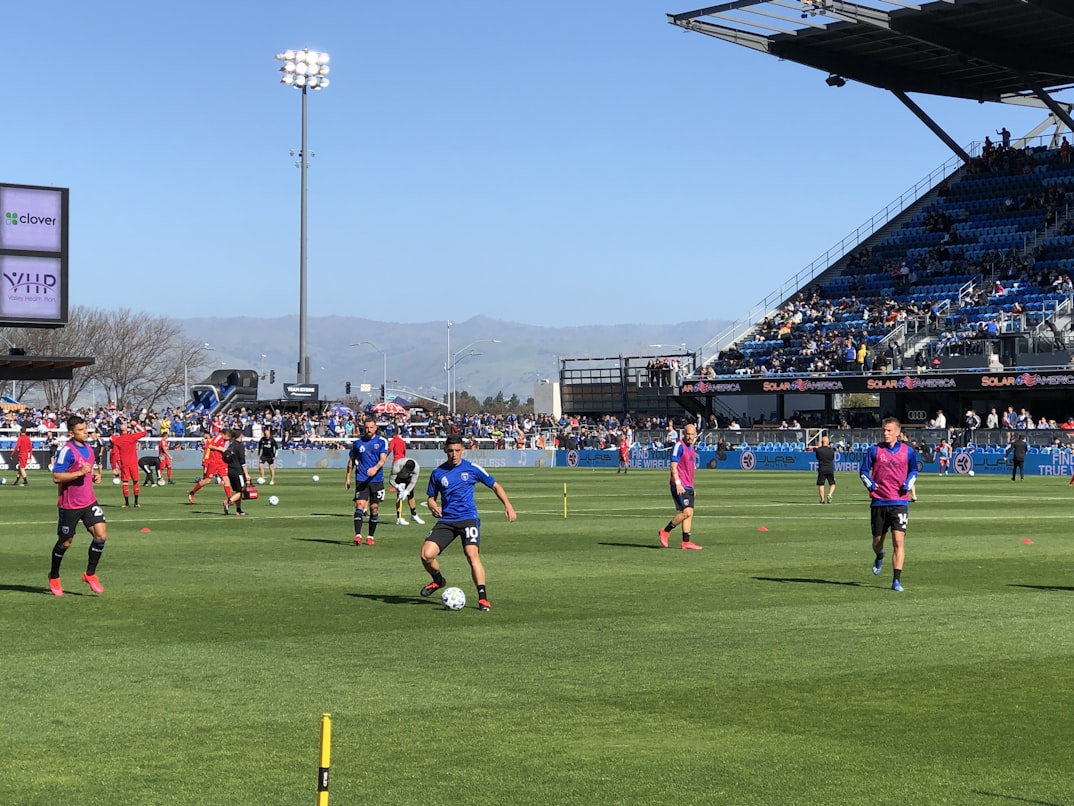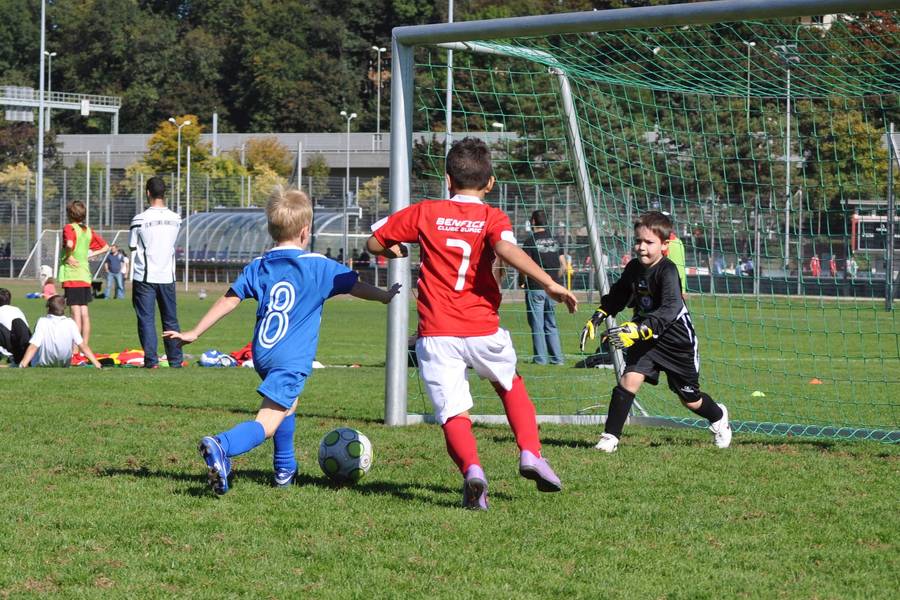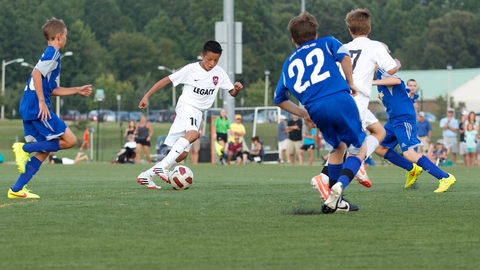Soccer’s popularity in the United States has been on a steady rise for decades, but 2024 marks a pivotal moment in its ascent within the American sports landscape. Long dominated by baseball, basketball, and American football, U.S. sports culture is now embracing soccer at an unprecedented rate. This shift is not only evident in the record-breaking attendance figures at MLS and NWSL games, but also in youth participation, the rising influence of diverse fan bases, and increasing media attention. Today, the question is no longer if soccer will secure a permanent spot in American sports culture but how soon it will rival traditional sports giants.
Several key factors contribute to this growth: a dynamic, youthful fan base, strategic investments by leagues like Major League Soccer (MLS) and the National Women’s Soccer League (NWSL), and the powerful impact of international events such as Copa America and the upcoming 2026 FIFA World Cup. As soccer solidifies its role in American sports, it's clear the sport is set to change the way we understand fan culture, sports participation, and even business opportunities in the United States.
Historical Evolution of Soccer in America
Soccer’s journey to mainstream popularity in the United States spans over a century, marked by both early setbacks and monumental successes. The sport’s roots trace back to the late 19th century, largely within immigrant communities who brought the game from Europe and Latin America. However, soccer’s big moment came in the 1970s with the formation of the North American Soccer League (NASL). The NASL introduced global superstars like Pelé and Franz Beckenbauer to American audiences, captivating fans and momentarily embedding soccer into U.S. sports culture. Despite early promise, the NASL folded in the 1980s due to financial instability and lack of broad support.
A turning point arrived in 1994 when the United States hosted the FIFA World Cup, which attracted record-breaking crowds and renewed interest in the sport. Riding on the momentum of the World Cup, Major League Soccer (MLS) was established in 1996. With a strategic, steady growth plan, MLS weathered its early challenges and gradually built a fan base. Today, it boasts nearly 30 teams and a dedicated following. Similarly, the National Women’s Soccer League (NWSL), established in 2012, has become one of the world's premier leagues for women’s soccer, reflecting the sport’s broader appeal across genders.
The presence of international stars like David Beckham, Thierry Henry, and, most recently, Lionel Messi, has only further solidified soccer’s status in the American sports scene, attracting both die-hard soccer fans and newcomers. The cultural impact of these players, alongside the efforts of the U.S. men’s and women’s national teams on the world stage, has propelled the game forward, making soccer a household sport in the U.S.
Youth Soccer and Grassroots Movements
The foundation of soccer’s growth in the U.S. lies in its appeal to young players. Youth soccer leagues and grassroots movements have made soccer one of the most popular organized sports for children across the country. Unlike more equipment-heavy sports like baseball and football, soccer’s accessibility—requiring minimal gear and offering lower injury risks—has made it a preferred choice for many parents. With millions of young players participating in soccer programs nationwide, the sport’s youth movement is also a significant contributor to its long-term growth.
Organizations like U.S. Youth Soccer and the American Youth Soccer Organization have played a major role in supporting this growth. The emphasis on inclusivity and community has allowed soccer to resonate with diverse communities, from urban centers to suburban neighborhoods. Programs in schools and after-school clubs continue to introduce the game to younger generations, creating a pipeline of fans and potential players. The rise of women’s soccer, fueled by the success of the U.S. Women’s National Team, has further inspired a generation of young girls to take up the sport, expanding its reach even more.
As these youth programs grow, they foster a passionate, engaged fan base from an early age—setting soccer up to not only become a major part of American sports culture but also to inspire the next wave of talent that will keep the sport thriving.
Professional Soccer Landscape: MLS and NWSL’s Role in Expansion
The success and rapid expansion of Major League Soccer (MLS) and the National Women’s Soccer League (NWSL) are critical indicators of soccer’s mainstream breakthrough in the U.S. Over the past decade, both leagues have consistently set new attendance records, adding new franchises and increasing their visibility across the nation.
For MLS, the growth has been phenomenal. Since its inception, the league has nearly tripled its number of teams, now covering major cities across the country and attracting millions of fans each season. New franchises in cities like Nashville, Austin, and Charlotte reflect the rising demand and enthusiasm for soccer. Teams like Atlanta United and LAFC boast dedicated fanbases that rival those in traditional sports, creating electric match-day atmospheres and showing that soccer can generate the same passion and loyalty historically seen in American football or basketball.
The NWSL has also achieved impressive milestones. With record-breaking attendance and viewership figures, especially for teams like San Diego Wave and Angel City FC, the league has demonstrated the strong demand for women’s soccer. The growing investment from sponsors and celebrities—like Natalie Portman, Serena Williams, and Kevin Durant—has further boosted NWSL’s profile, making it one of the leading women’s leagues in the world. The league’s expanding fanbase and investment reflect a nationwide embrace of soccer, helping it reach more diverse demographics and providing role models for young players across the country.
This expansion reflects not only the league’s commitment to growth but also a larger cultural shift toward soccer in American society. As MLS and NWSL continue to flourish, they provide a stable infrastructure that will support soccer’s long-term growth and development in the U.S.
Diverse and Young Fan Base Driving Soccer’s Popularity
One of the most compelling aspects of soccer’s growth in the U.S. is the demographic profile of its fanbase. Soccer resonates deeply with younger generations, particularly Gen Z and millennials, who gravitate toward the sport’s global appeal, fast-paced nature, and cultural diversity. This young audience is also highly digital-savvy, engaging with soccer content through streaming platforms, social media, and interactive experiences, which helps drive further growth.
A significant portion of soccer’s U.S. fanbase is also ethnically and culturally diverse, particularly due to the influence of Hispanic communities where soccer is a longstanding tradition. In fact, Hispanic Americans are among the most enthusiastic soccer supporters in the U.S., with deep-rooted allegiances to both MLS teams and international clubs, as well as strong support for Liga MX teams. Soccer’s inclusivity and its role as a cultural touchstone for many communities have made it especially appealing in the United States, where people from diverse backgrounds come together to celebrate the sport.
This growing fanbase is not limited to local leagues; American fans are increasingly engaged with European soccer leagues like the English Premier League, La Liga, and Serie A. The access provided by digital streaming and sports networks has introduced American viewers to top-tier international teams, further integrating soccer into the daily lives of fans. This broad engagement across demographics and leagues signifies that soccer is not only growing in popularity but also establishing a cultural foothold in American society, powered by a passionate and diverse group of fans.
Major International Events and Their Impact
International events have played a monumental role in boosting soccer’s profile in the United States, with 2024 marking a pivotal year. This summer’s Copa America, held in the U.S. and featuring top teams from across South America, brought a surge in interest, especially in major cities like New York, where sold-out matches filled stadiums with enthusiastic fans. For many Americans, these events provide a rare chance to witness soccer’s biggest stars—like Lionel Messi—in action, fostering a connection with the sport that goes beyond national boundaries.
Beyond Copa America, the anticipation for the 2026 FIFA World Cup, which the U.S. will co-host alongside Canada and Mexico, is perhaps the most exciting opportunity for American soccer. With global attention set to focus on the U.S. as a host nation, the World Cup promises to be a catalyst for soccer’s long-term growth, inspiring new generations of fans and players. The 1994 World Cup, held in the U.S., led to the founding of MLS and is often credited with sparking America’s modern soccer culture. The 2026 tournament is expected to have an even larger impact, given the sport’s already solid foundation in the U.S. and the heightened global interest in American soccer.
These international events not only capture the interest of existing fans but also draw in newcomers, creating a unique opportunity for soccer to expand its reach in the U.S. market. The impact of these events will likely extend well beyond the final whistle, fostering a legacy of growth and enthusiasm for soccer across the nation and setting the stage for the sport to secure its place in the American sports hierarchy.
Betting on Phoenix Rising FC
Phoenix Rising FC, one of the most prominent clubs in the United Soccer League (USL), exemplifies soccer’s rising influence at the regional level in the U.S. Based in Arizona, Phoenix Rising has cultivated a passionate fan base and has grown to become one of the strongest teams outside of Major League Soccer (MLS). As soccer continues to flourish in the United States, Phoenix Rising is emerging as a team to watch, both on and off the field. Its success signals broader growth opportunities for soccer at all levels across the country.
Fans and bettors alike are increasingly paying attention to Phoenix Rising’s games and performance. Soccer betting in Arizona has surged, with fans looking to engage with the sport in new and exciting ways. Platforms dedicated to Arizona sports betting report a spike in interest in local teams like Phoenix Rising FC, driven by the broader growth of soccer and the team’s recent successes. According to bettingaz.com, Phoenix Rising’s popularity and performance are generating a lot of buzz among bettors, solidifying its status as an exciting prospect in U.S. soccer betting.
As Phoenix Rising continues to capture the attention of local fans and bettors, its impact reflects soccer’s increasing visibility and the growing appeal of betting on soccer in the U.S. This trend underscores how local clubs and betting opportunities contribute to the overall growth of soccer culture across the nation.
The Power of Media and Streaming in Expanding Soccer's Reach
In recent years, media and streaming platforms have played an instrumental role in bringing soccer to American audiences, helping the sport gain visibility and grow its fanbase. Unlike traditional American sports, which have long relied on cable TV, soccer’s growth has been fueled by the accessibility of digital streaming, allowing fans to watch games from around the world on demand. Platforms like Apple TV and YouTube have democratized soccer content, giving fans across the U.S. easy access to international matches, MLS games, and European leagues.
The MLS-Apple TV deal, a 10-year agreement reportedly worth $2.5 billion, marked a watershed moment for soccer broadcasting in the U.S. This partnership not only amplifies the reach of MLS games but also underscores soccer’s potential as a leading sport for the streaming era. By allowing fans to follow their favorite teams from anywhere, streaming platforms have helped bridge the gap between American audiences and international soccer, making it easier than ever to engage with top-tier soccer content.
Beyond MLS, streaming platforms have made it possible for fans to follow European leagues like the Premier League, La Liga, and the Champions League, fostering a deep, cross-cultural appreciation for the sport. This shift to streaming has especially resonated with younger viewers, who prefer digital platforms over traditional cable, aligning soccer with the habits of the next generation. By embracing digital media, soccer has positioned itself as an accessible, modern sport, reaching fans who may not have otherwise engaged with the game.
Fan Culture and Local Support: MLS's Unique Appeal
One of the most exciting aspects of soccer’s growth in the U.S. is the vibrant fan culture that has blossomed around local MLS clubs. Across the country, passionate supporters have helped create a distinct, energetic atmosphere at MLS games, with dedicated fan groups, chanting, and creative “tifo” displays becoming commonplace. Cities like Portland, Seattle, Atlanta, and Los Angeles are home to some of the most enthusiastic soccer communities, where game days resemble the fervent soccer culture seen in Europe and Latin America.
Supporter culture is integral to soccer’s appeal, offering fans a sense of belonging and identity that rivals other major American sports. In Seattle, for instance, the Sounders enjoy an almost cult-like following, with fans regularly filling Lumen Field and supporting their team through vibrant chants and displays. Similarly, Atlanta United, which holds some of the highest attendance records in MLS, has cultivated a soccer culture that draws tens of thousands to each game, creating an electric atmosphere that rivals any sporting event in the country.
This grassroots support has transformed MLS from a league striving to survive into one of the most popular and fastest-growing leagues in the country. The sense of community and unity among fans has helped soccer differentiate itself within the American sports landscape. Unlike traditional sports, where fans often support multiple teams, soccer fans are often dedicated to a single club, creating a unique, lifelong connection to their local teams. This supporter-driven culture underscores the sense of community that MLS offers, providing a deeply personal, engaging experience that continues to attract new fans. As MLS clubs expand and fan culture thrives, the league’s appeal and relevance in American sports are only set to grow.
Economic and Business Opportunities Within U.S. Soccer
As soccer’s popularity grows in the United States, so do the economic and business opportunities surrounding the sport. The U.S. soccer industry is attracting significant investment from both traditional sports investors and high-profile celebrities, drawn by the potential for high returns as the sport gains traction. From club ownership to merchandising and broadcasting rights, the financial landscape of American soccer offers diverse revenue streams for entrepreneurs and stakeholders.
Club ownership has become a particularly attractive investment. Celebrities like David Beckham, who co-owns Inter Miami, and actors like Ryan Reynolds, who co-own the Welsh club Wrexham A.F.C., are helping raise soccer’s profile in the U.S. through their involvement in the sport. In the NWSL, Angel City FC has drawn support from an array of A-list investors, including Natalie Portman and Serena Williams, which has elevated the league’s visibility and increased public interest in women’s soccer. This influx of celebrity ownership brings both capital and media attention, fueling growth in fan engagement and team valuations.
Additionally, sponsorships and media rights deals are a major revenue source in U.S. soccer. MLS’s partnership with Apple TV and the NWSL’s forthcoming media deal are just a few examples of how leagues are monetizing the sport through media. Merchandise sales, both for MLS and NWSL teams as well as for European club apparel, have surged as soccer’s visibility increases. With new stadiums, state-of-the-art facilities, and soccer academies emerging nationwide, the infrastructure around the sport is expanding, creating opportunities for companies in construction, technology, and event management.
These investments reflect soccer’s growing economic potential in the U.S., offering a stable, scalable market for businesses eager to capitalize on soccer’s rising popularity. As leagues continue to grow and more fans engage with the sport, the business ecosystem around U.S. soccer is expected to thrive, solidifying the sport’s place in the American market and presenting new possibilities for investors and brands.
Future Outlook: Can Soccer Compete with America's Big Three?
Despite its impressive growth trajectory, soccer still faces challenges in overtaking America’s “Big Three” sports—football, basketball, and baseball—in terms of viewership, cultural significance, and revenue. Football, with its deeply ingrained place in American culture and massive fanbase, remains a formidable competitor. Likewise, basketball and baseball have well-established fan loyalties, supported by extensive media deals, major advertising revenue, and long-standing traditions.
However, soccer’s unique strengths position it well to continue rising in popularity, particularly among younger and more diverse demographics. Youth participation in soccer far exceeds that of other sports, creating a pipeline of potential fans who will grow up with a strong affinity for the game. As concerns about injury in contact sports like football persist, soccer’s appeal as a safer alternative continues to attract new participants. The sport’s popularity is further reinforced by the growing Hispanic population in the U.S., a demographic with a deep cultural connection to soccer.
International events like the 2026 FIFA World Cup are expected to have a lasting impact on American soccer, sparking enthusiasm and potentially driving a wave of new fans. The tournament’s legacy could extend beyond immediate viewership to foster a long-term fanbase and infrastructure for soccer in the U.S. If MLS and NWSL continue expanding, with more teams, larger stadiums, and increased media coverage, soccer may well achieve a top-tier status in American sports.
While soccer may not surpass the Big Three in the immediate future, its growth trajectory indicates that it could challenge these sports for a more prominent position in the long run. Soccer’s inclusive, global appeal and ability to attract younger fans make it uniquely positioned to continue its rise in the U.S. As soccer secures its role in American culture, it stands to reshape the future of the sports landscape in profound ways.




















